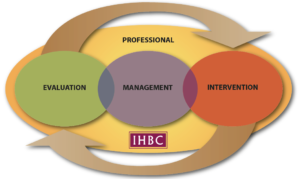 In the in the recent issue of Context, No 162, devoted to the heritage of New Towns Bob Colenutt and Sabine Coady Schaebitz make the case for saving new town heritage, arguing that protecting the extraordinary heritage of new towns will not bring back the post-war spirit of town planning and architectural idealism, but it will remind us of what is possible.
In the in the recent issue of Context, No 162, devoted to the heritage of New Towns Bob Colenutt and Sabine Coady Schaebitz make the case for saving new town heritage, arguing that protecting the extraordinary heritage of new towns will not bring back the post-war spirit of town planning and architectural idealism, but it will remind us of what is possible.
For your CPD boost: Why not look for parallel issues in the New Towns (or similar) near you, remembering that Designing Buildings Wiki (DBW), Google’s street map, and IHBC’s Conservation Wiki are all accessible tools to aid online investigation of your choice while recognising current travel restrictions?
Bob Colenutt and Sabine Coady Schaebitz write:
The architecture critic of the Financial Times recently suggested that the new towns are the greatest architectural achievement of the 20th century. Yet the iconic architectural and urban heritage of post-war new towns in the UK and mainland Europe is in danger. Although post-war building heritage is undergoing a reassessment in the UK and elsewhere in Europe, there is no national protection policy for the extensive heritage of the post-war new towns which represents a remarkable legacy of that period and is highly significant from a social and political point of view.
One of the reasons why saving this heritage is important is that it concerns not just the loss of modernist architecture and post-war urban planning achievements. The recent focus on new town legacy is part of a wider reflection on the loss of the social and egalitarian mission that underpinned the new towns movement – a mission that is missing from much contemporary town planning and architecture. It was in this context that a New Towns Heritage Research Network, including civic societies and universities, was formed in 2017…..
Many new towns have recently celebrated significant anniversaries, which have provided an opportunity to look closely at their built heritage. This was one of the factors that prompted the formation of the New Towns Heritage Research Network. The first generation new towns of Stevenage and Harlow are 70 years old. Later generations of new towns such as Milton Keynes, Peterborough and Northampton are 50 years old. Similar birthdays are being celebrated in new towns in the Netherlands and Germany. The UK anniversaries have attracted national and international attention to the new town story…..
Inevitably, each new town has a different level of heritage protection for individual iconic buildings, neighbourhood housing clusters, public art or landscaping. The incidence of valuation and protection by the local planning system is generally based not on a systematic valuation of new town heritage but on piecemeal selection of key buildings or sculpture, for example, to be protected. An exception to this piecemeal approach is the recent pioneering work of Milton Keynes Council undertaken for its local plan consultation. The council has asked the public to identify parts of the new city’s built heritage that they most value, with a view to including these features in the local plan as buildings and spaces of special interest and importance.
It is important that heritage valuation takes into account the significance of the founding ideology of the new towns. The planning and design of housing, public parks, public art and civic buildings in the new towns are manifestations of the welfare state spirit across Europe in the post-war period. These gave a distinctive character to the built heritage, which can not be given its full value without considering this social context.
View the full article
View the new towns heritage research network site at MKDC
For more background see the NewsBlog
Reading Context helps IHBC members develop their skills across all of the IHBC’s Areas of Competence, and so is a critical baseline in addressing priorities in Continuing Professional Development (CPD)
To access Context:
- IHBC Members: See your postbox, if you don’t already have it by your desk or bed
- Non-members: Go to the Context Archive
If you have any suggestions for Context articles or other material contact Mike Taylor at: editorial@ihbc.org.uk
See information on Context’s future issues, guidance for authors
Access the online archive
See more IHBC background and guidance on IHBC CPD and on how you might use past, current and future issues of Context
 See the formal guidance paper on IHBC CPD(scheduled for update)
See the formal guidance paper on IHBC CPD(scheduled for update)
See more on the IHBC Competences and Areas of Competence

